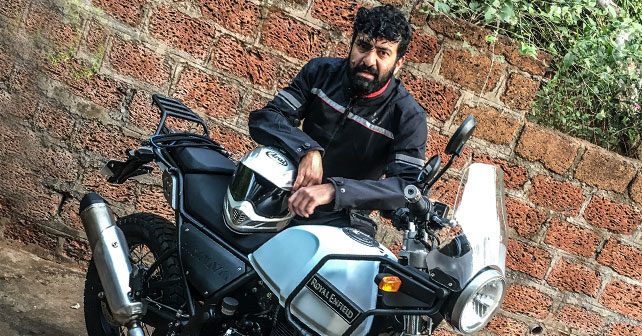
During our ride of this brand new bike from Royal Enfield, we had one man leading the way on the snow-covered trails in the Himalayas – none other than Siddhartha Lal, Managing Director & CEO, Eicher Motors (better known as Sid, at least in biking circles). He’s also led RE to a sales growth of over 50% during the past year. We sat down with him in Mashobra to pick his brains on RE’s latest creation – the Himalayan.
Royal Enfield has built a brand new bike from scratch, and also created a whole new segment. When you’re already doing so well in the market, why did you need to make the Himalayan – why would you take such a gamble?
Because we must [laughs]… Of course it was thought through, and of course we’ve analysed the numbers. We just had to do this! The story, of course, is that we’ve been doing the Himalayan since the 50s. Since Royal Enfield came to India, Royal Enfields and Bullets were deployed with the Army up in the Himalayas. But more than that, over the last few decades we’ve become synonymous with the Himalayas. Royal Enfields have been the definitive motorcycle out there. So for anyone who has been seeking adventure and touring in the country – in the Himalayas, but also elsewhere – Royal Enfield is the go-to motorcycle. We’ve learnt a lot from that. A lot of our employees, including me, have all grown up with the Himalayas as the ultimate place to ride a motorcycle – which is why an idea has been growing at Royal Enfield over time that this [the Himalayan] is a motorcycle that we must do.
When the Himalayan was envisioned, what was the brief you gave your engineers in terms of engine, styling, performance, and comfort?
Let’s do ‘Adventure Touring,’ but not with the archetype of adventure touring in Europe – because that’s where it really comes from, or maybe Japan. We had to do it for an Indian audience – an audience that’s extremely different in height, in price sensitivity, in every single requirement really. It’s basically a commuting market that also wants adventure, as opposed to leisure. So, we said that we want to do all of that with no compromises. From the ground up, it’s got to be a brand new motorcycle. We’re not going to take any carry over parts – it’s going to do what it needs to do in order to traverse the Himalayas. So on-road, and off-road, every single aspect of this bike has been thought through from that angle. Starting from the 21-inch front wheel, with a very light handle bar and steering, front suspension travel of 200mm, and our first mono shock rear suspension that has 180mm of travel – which is a lot for a rear suspension. So it gives us a progressive suspension, as well as a low seat height – which was a very tricky to do, other people don’t really do that. So it’s got an 800mm seat height, which allows people to get on it and not feel intimidated. We wanted something that was accessible, but purposeful.
To ride off-road, you need an engine with a flat torque curve because you need low-end grunt more than top-end power. So that’s what we did with the engine. It gives you about 30Nm, which is what we wanted. So that was the brief. It needs to be a purposeful, no compromise, adventure tourer, which should also be your only motorcycle.
You zeroed in on a 411cc engine for the Himalayan, and stuck with a carb system. What were the reasons behind those choices?
There were hundreds of choices that we made for the Himalayan. All of them come from the core of whom we’re trying to address and what we’re trying to accomplish. The 411cc engine is because we wanted something that could give you enough torque and power, but not be intimidating – in terms of too much power or too fuel inefficient – and it shouldn’t cost the moon either. The carburettor also came from that idea. We tested EFI (Electronic Fuel Injection), and we have it on other motorcycles – but when we looked at them in parallel, we found that the advantage that EFI is giving is only slightly incremental. And the customer who we’re going to sell this to would prefer to have this motorcycle for around Rs. 10-15,000 less. We took that trade off on behalf of the customer.
Given the fact that emissions are now being taken seriously in India, wouldn’t EFI be the way forward? Will we see more fuel injected engines on your new and existing range of motorcycles?
Absolutely, there’s no question about that. We have work proceeding on all fronts at Royal Enfield right now, in regards to all the technologies which either from a consumer side or from a legislation side that we need to graduate to – ABS, EFI, etc., all of that work is on-going. We have EFI on some of the motorcycles in our range. Obviously, all the motorcycles that are going to be sold in Europe from the 1st of January 2017 are all going to have EFI. We’re prepared for everything. Of course, the Himalayan is a baby right now – and we didn’t want the price factor to be so intimidating that people don’t buy it.


















Write your Comment